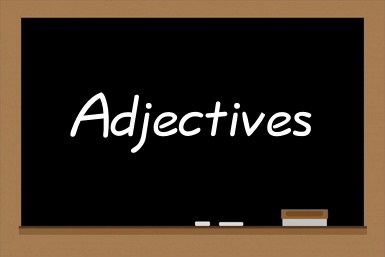Adjectives - Learn Swedish

Adjectives are words that are used to describe or provide extra information about a noun or pronoun. In this lesson you'll learn how to use adjectives in the Swedish language. You'll also learn some common Swedish adjectives. Useful sentence templates to use with adjectives are also included.
Online flashcards and a quiz are included to help you learn the Swedish adjectives included in this lesson.
Regular Adjectives
Swedish adjectives have different endings, based on the noun they modify. For example, the adjective grön, which means green has the following forms:
- grön when used with nouns that use the indefinite article “en”
- grönt when used with nouns that use the indefinite article “ett”
- gröna when used with plural nouns or nouns with the definite article.
Examples
en grön kopp
a green cup
ett grönt hus
a green house
gröna hus
green houses
det gröna huset
the green house
Irregular Adjectives
The Swedish adjective for small is irregular.
- liten when used with nouns that use the indefinite article “en”
- litet when used with nouns that use the indefinite article “ett”
- små when used with plural nouns or plural nouns with the definite article
- lilla when used with singular nouns with the definite article
Examples
ett litet hus
a small house
det lilla huset
the small house
de små husen
the small houses
Advertisement
Swedish Phrases
Here are some useful sentence templates that you can use with adjectives. Practice combining these with the adjectives included in this lesson to help you improve your Swedish communication skills.
| Jag är [adjective]. | I am [adjective]. |
| Är du [adjective]? | Are you [adjective]? (singular) |
| Är ni [adjective]? | Are you [adjective]? (plural) |
| Hon är [adjective]. | She is [adjective]. |
| Är hon [adjective]. | Is she [adjective]. |
| De är inte [adjective]. | They are not [adjective]. |
| Det är ganska [adjective]. | It is quite [adjective]. |
| Det är verkligen [adjective]. | It is really [adjective]. |
| Det är mycket [adjective]. | It is very [adjective]. |
| Det är så [adjective]. | It is so [adjective]. |
Swedish Vocabulary
Here are some very common Swedish adjectives.
| bred | wide |
| fel | wrong |
| gammal | old |
| hård | hard |
| hög | high, loud, tall |
| högljud | noisy |
| ledsen | sad |
| liten | small, little, short (not tall) |
| ljus | bright, light |
| lycklig | happy |
| låg | low |
| lång | long |
| långsam | slow |
| mjuk | soft |
| mörk | dark |
| ojämn | rough |
| rätt | right (correct) |
| slät | smooth |
| smal | narrow, slim |
| snabb | fast |
| stor | big |
| tjock | thick |
| torr | dry |
| trevlig | nice |
| trång | narrow, tight, cramped |
| trött | tired |
| tunn | thin |
| tyst | quiet, silent |
| ung | young |
| vacker | beautiful |
| våt | wet |
Flashcards
Here are some flashcards to help you learn these common Swedish adjectives.
Read and Listen
Ja och Nej
Here is a small section from the story "Yes and No" by Helena Nyblom. Listen to it while reading it to help you improve your Swedish comprehension.
| Ja och Nej | Yes and No |
|---|---|
| Han var en svartskäggig och svartögd man, stor och stark och skicklig till allt arbete. Ett gott förstånd hade han också, och hans ord var att lita på, men hans vilja var så hård som stångjärnet i hans smedjor, ja, ännu hårdare. Ty när stångjärnet blev glödgat och hamrarna började dansa på det, kunde till och med de hårdaste stänger böja sig, men hade Rolf en gång sagt: Jag vill! eller: Jag vill icke! så kunde ingen mänsklig makt förmå honom att ändra beslut. | He was a black-bearded and black-eyed man, big and strong and accomplished all the work. A good sense he had, too, and his word was to be trusted, but his will was so hard as rod iron in his smithy, yes, even harder. For when the iron rod was annealed and hammers began to dance on it, could even with the toughest closing bow down, but had Rolf once said: I want to! or: I don't want to! so could not a human power cause him to change his decision. |
Quiz
Take this quiz to see how well you know the Swedish adjectives introduced in this lesson.